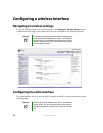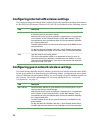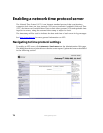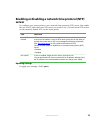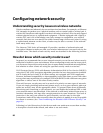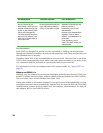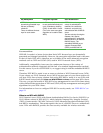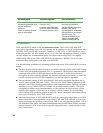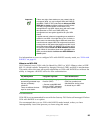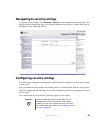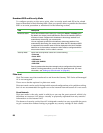
82
www.gateway.com
Recommendations
Static WEP was designed to provide security equivalent of sending unencrypted data
through an Ethernet connection, however it has major flaws and it does not provide even
this intended level of security.
Therefore, Static WEP is not recommended as a secure mode. The only time to use Static
WEP is when interoperability issues make it the only option available to you and you are
not concerned with the potential of exposing the data on your network.
For information on how to configure Static WEP security mode, see “Static WEP” on
page 89.
When to use IEEE 802.1x
IEEE 802.1x is the standard for passing the Extensible Authentication Protocol (EAP) over
an 802.11 wireless network using a protocol called EAP Encapsulation Over LANs (EAPOL).
This is a newer, more secure standard than Static WEP.
While parts of 802.1x are indeed standard, it uses port control with dynamically varying
encryption keys that can be automatically updated over the network with the Extensible
Authentication Protocol (EAP) to enable user, not machine, authentication. To make all
this happen, 802.1x uses RADIUS servers.
Key Management Encryption Algorithm User Authentication
Static WEP uses a fixed key
that is provided by the
administrator. WEP keys are
indexed in different slots (up
to four on the Gateway 7001
Series self-managed AP).
The client stations must have
the same key indexed in the
same slot to access data on
the access point.
An RC4 stream cipher is used
to encrypt the frame body and
cyclic redundancy checking
(CRC) of each 802.11 frame.
If you set the Authentication
Algorithm to Shared Key, this
protocol provides a
rudimentary form of user
authentication.
However, if the Authentication
Algorithm is set to “Open
System”, no authentication is
performed.
If the algorithm is set to
“Both”, only WEP clients are
authenticated.



